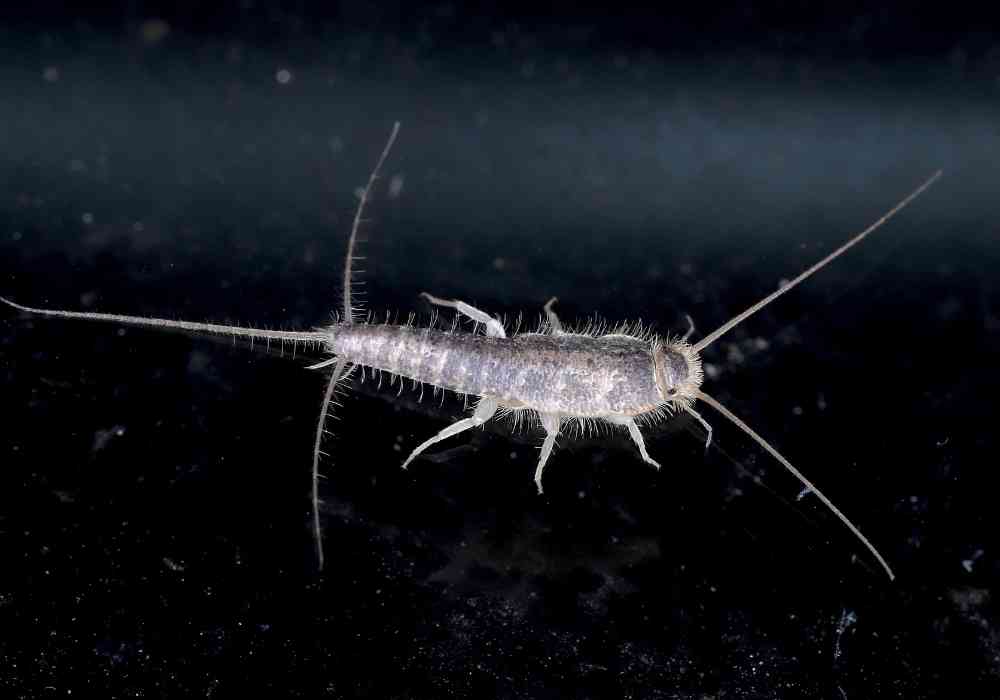
Silverfish infestations can be a persistent and frustrating problem for homeowners. These tiny, wingless insects can damage paper products, clothing, and other household items. While they are harmless to humans, their presence can be unsightly and uncomfortable. In this article, I will explore the effectiveness of pest control methods in eliminating silverfish infestations and provide practical tips on how to prevent them from entering your home in the first place.
Key Takeaways:
- Silverfish infestations can be eliminated with a combination of non-chemical and chemical pest control methods.
- Understanding silverfish behavior and habits can help in choosing the most effective control approach.
- Non-chemical methods of silverfish control include using natural repellents, reducing moisture levels, and implementing preventive measures.
- Chemical pest control methods such as insecticides, baits, and traps can be highly effective in eliminating silverfish.
- Integrated Pest Management (IPM) offers a comprehensive approach to silverfish control.
- Preventive measures are crucial in avoiding silverfish infestations.
Understanding Silverfish Behavior and Habits
Before we dive into the different methods of eliminating silverfish from your home, it is important to understand their behavior and habits.
Silverfish are small, wingless insects with a slender, silvery body that can grow up to ¾ of an inch in length. They are nocturnal insects that prefer dark and damp areas such as basements, bathrooms, and kitchens. They can feed on a variety of materials such as paper, glue, fabrics, and even other insects.
Silverfish are known for their ability to survive in extreme conditions. They can go without food for long periods and can survive in temperatures ranging from freezing to over 90 degrees Fahrenheit.
One of the most interesting behaviors of silverfish is their mating ritual. Male silverfish will lay a spermatophore, a small, white, oval-shaped structure on the ground. The female then picks up the spermatophore with her genitalia to fertilize her eggs.
Silverfish Habits
Understanding the habits of silverfish is essential in developing an effective pest control strategy. Here are some of their common habits:
- Silverfish are most active at night and can easily go unnoticed during the day.
- They prefer dark and damp environments and can be found in areas such as bathrooms, kitchens, basements, and laundry rooms.
- They feed on a variety of materials including paper, glue, fabrics, and other insects. They can even survive on nothing but water for several months.
- Silverfish reproduce quickly and can lay up to 20 eggs at a time.
- They are fast runners and can easily escape danger by hiding in tight spaces or under objects.
Now that we have a better understanding of silverfish behavior and habits, we can move on to the different methods of controlling and eliminating silverfish infestations in our homes.
Non-Chemical Methods of Silverfish Control
When it comes to silverfish control, non-chemical methods can be just as effective as chemical ones. In fact, natural remedies and preventive measures are often preferred because they are safer for humans, pets, and the environment. Here are some non-chemical methods you can use to get rid of silverfish:
Natural Silverfish Repellents
There are several natural substances that act as silverfish repellents, including lavender, citrus oils, cedar shavings, and diatomaceous earth. You can use these substances in various ways, such as placing sachets or essential oil diffusers around your home, sprinkling diatomaceous earth around baseboards and in cracks and crevices, or lining your shelves and drawers with cedar shavings.
It is important to note that natural repellents may not have an immediate effect on silverfish, and you may need to use them in combination with other methods for best results.
Reducing Moisture Levels
Silverfish thrive in moist environments, so reducing moisture levels is a key step in preventing and controlling infestations. Make sure to fix any leaks or plumbing issues promptly, use dehumidifiers in damp areas of your home, and keep your bathroom and kitchen well-ventilated.
Preventing Silverfish Infestations
Preventive measures can go a long way in keeping silverfish out of your home. Seal any cracks or gaps in your walls, floors, and foundation, store food in airtight containers, regularly vacuum and dust your home, and declutter your basement and attic to eliminate potential hiding places for silverfish.
Implementing these non-chemical methods can help you get rid of silverfish and prevent future infestations. However, if your silverfish problem persists or becomes too severe, it may be time to seek professional pest control services.
Chemical Pest Control for Silverfish
Chemical pest control methods can be highly effective in getting rid of silverfish infestations. Insecticides, baits, and traps are commonly used to eliminate these pests. Insecticides are available in different forms including sprays, dusts, and powders, and can be purchased over the counter or applied by professional pest control companies.
Silverfish baits are another effective option for eliminating infestations. These baits contain insecticides and are typically placed in areas where silverfish are commonly found, such as basements, bathrooms, and kitchens.
Traps can also be used to capture silverfish. Sticky traps are designed to attract the pests with a bait and then trap them on an adhesive surface. These traps are useful for monitoring the effectiveness of pest control methods and for reducing the number of silverfish in an area.
Professional Pest Control for Silverfish
If chemical pest control methods are not effective in eliminating silverfish, it may be necessary to seek professional pest control services. Professional exterminators have access to stronger insecticides and specialized equipment to remove silverfish infestations completely.
Professional pest control services may also be necessary if the infestation is too large or difficult to manage on your own. Trained professionals can assess the extent of the infestation and offer recommendations for the most effective treatment options.
Integrated Pest Management for Silverfish
Integrated Pest Management (IPM) is a comprehensive approach to pest control that emphasizes the use of non-chemical methods first, and chemical treatments only when necessary. This approach involves identifying the pest, understanding its behavior and habits, and implementing a combination of prevention, monitoring, and control measures.
When it comes to silverfish control, the principles of IPM can be applied to effectively manage infestations. These include:
- Identification: Silverfish can be identified by their small, teardrop-shaped bodies and silver-blue coloring. They are nocturnal and prefer dark, damp environments.
- Prevention: Prevention measures include reducing moisture levels in your home, sealing up cracks and crevices, and eliminating food sources such as starches, sugars, and cellulose-based materials.
- Monitoring: Regular monitoring can help detect silverfish infestations early. This can be done by setting up sticky traps or checking common hiding places, such as in closets and under sinks.
- Control: Non-chemical methods of control include using natural repellents such as cedar or lavender, vacuuming regularly, and reducing clutter. Chemical treatments, such as insecticide sprays or dusts, can be used if necessary but should be applied by a professional pest control service.
By implementing these IPM principles, you can effectively manage silverfish infestations and prevent future outbreaks. However, if the infestation is severe or persists despite your efforts, it may be necessary to seek professional assistance.
Prevention Tips to Avoid Silverfish Infestations
Prevention is key when it comes to avoiding silverfish infestations in your home. By implementing these simple tips, you can reduce the risk of silverfish entering and thriving in your living space.
1. Reduce Moisture Levels
Silverfish are attracted to moist environments. To reduce moisture levels in your home, fix any leaky pipes, ensure proper ventilation in bathrooms and kitchens, and use a dehumidifier if necessary.
2. Seal Entry Points
Silverfish can enter through small cracks and gaps around doors, windows, and foundations. Seal these entry points with caulking or weather stripping to prevent their entry.
3. Regular Cleaning
Regular cleaning helps to eliminate food sources and hiding places for silverfish. Sweep, mop, and vacuum your floors regularly, and keep your storage areas organized and clutter-free.
4. Store Food Properly
Store food, especially starchy items like flour and cereal, in airtight containers made of glass or plastic.
5. Professional Pest Control
If you suspect a silverfish infestation in your home, seek professional pest control services for effective and thorough treatment.
By following these prevention tips, you can create an environment that is less conducive for silverfish survival, reducing the likelihood of an infestation in your home.
Conclusion
Silverfish can be a nuisance, but they can be effectively controlled and eliminated through a combination of non-chemical and chemical pest control methods. It is important to understand their behavior and habits before deciding on a method. Non-chemical methods, such as reducing moisture levels and using natural repellents, can be effective for mild infestations. For severe infestations, chemical pest control methods, including insecticides, baits, and traps, may be necessary.
Integrated Pest Management (IPM)
Using an integrated pest management approach can offer a comprehensive solution to silverfish control. IPM focuses on prevention and incorporates both non-chemical and chemical methods. This approach includes monitoring and identifying the source of infestation, implementing preventive measures, and using chemical treatments if necessary.
Remember, taking preventive measures is key to avoiding silverfish infestations in the first place. Keep your home clean, dry, and well-ventilated. Seal cracks and crevices and store food in airtight containers. If you have a silverfish infestation, don’t hesitate to seek professional assistance.
By following these silverfish control methods and taking preventive measures, you can eliminate silverfish from your home and create a comfortable and safe living environment.
FAQ
Q: Can pest control get rid of silverfish?
A: Yes, pest control methods can be effective in eliminating silverfish infestations in homes. By using various approaches, such as non-chemical and chemical methods, silverfish can be eradicated.
Q: Why is understanding silverfish behavior and habits important?
A: Understanding silverfish behavior and habits is crucial in choosing the most effective approach to eliminate them from your home. This knowledge helps in implementing preventive measures and selecting appropriate pest control methods.
Q: What are non-chemical methods of silverfish control?
A: Non-chemical methods of silverfish control include using natural repellents, reducing moisture levels, and implementing preventive measures to discourage silverfish infestations.
Q: How effective are chemical pest control methods for silverfish?
A: Chemical pest control methods, such as insecticides, baits, and traps, can be highly effective in eliminating silverfish infestations. However, it is important to follow instructions and guidelines carefully.
Q: What is integrated pest management (IPM) for silverfish?
A: Integrated Pest Management (IPM) offers a comprehensive approach to silverfish control. It involves a combination of preventive measures, non-chemical methods, and targeted use of pesticides when necessary.
Q: How can I prevent silverfish infestations?
A: To prevent silverfish infestations, it is important to keep your home clean and dry, seal cracks and crevices, store food in airtight containers, reduce clutter, and inspect incoming items for silverfish before bringing them inside.
- Does Flea Treatment Kill Lice? - September 8, 2023
- Does Flea Treatment Kill Mites? - September 8, 2023
- How to Put Flea Treatment on a Dog? - September 8, 2023






